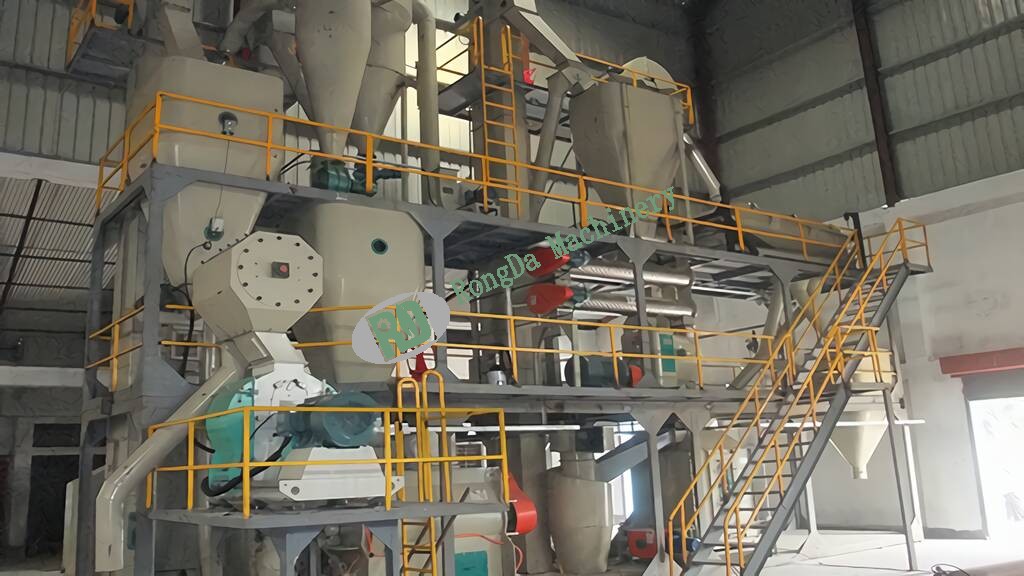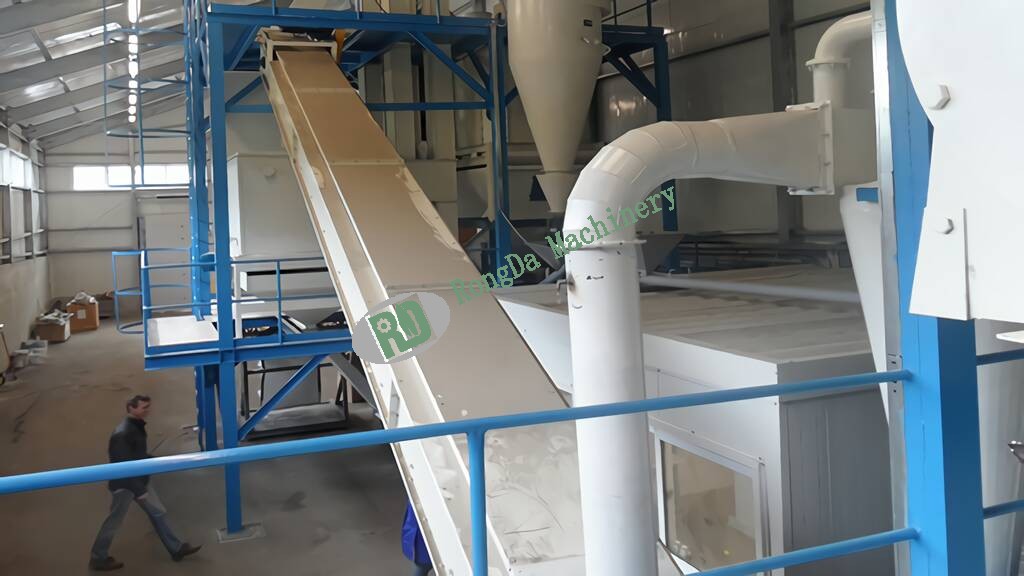Welcome to Rongda Machinery Co., Ltd
Toggle Navigation
Hey there! Ever wonder how those huge bags of animal feed actually get made? Let's break down what a complete feed mill plant really is – it's basically the kitchen of modern animal nutrition. These facilities turn raw farm ingredients into balanced meals for livestock, making them crucial players in our food system.
So What Exactly Is This "Complete Feed Mill"?Think of it as a high-tech food factory specifically for animals. Its job? To transform grains, seeds, and proteins into standardized, nutrition-packed feed. Why does this matter? Healthy animals need consistent, quality food to grow strong and produce efficiently—and farms rely on mills to deliver exactly that.
Here's why they've become indispensable:
✨ Meets Rising Demand: As livestock farming scales up, mills keep pace with feed needs.
⚙️ Boosts Efficiency: Modern tech means less waste and lower costs.
🌱 Supports Sustainability: Smarter resource use helps farms reduce their environmental footprint.
From Field to Feed Bin: The Journey of IngredientsEver peek into a feed bag? Those colorful pellets start life as basic farm commodities. Here’s what typically goes in:
Grains: Rice, millet, or sorghum act as the carb-rich base.
Cereal Powerhouses: Corn and wheat bring calorie-dense starch.
Protein Boosters: Soybean meal or corn gluten help animals build muscle.
Fat Sources: Sunflower oil or veggie oils get blended in for concentrated energy.
Nutrition Enhancers: Vitamins, minerals, and probiotics (those good bacteria).
Fun fact: You’d be surprised how carefully these get combined! Each batch is precision-formulated to meet specific needs—dairy cows need different nutrition than broiler chickens, for example.

Inside the Mill: Where Ingredients Become FeedRaw materials don’t just magically transform. Here’s the behind-the-scenes action:
Grinding Stage
Ingredients get pulverized to unlock nutrients and aid digestion.
Mixing It Up
Think of this as a massive baker’s mixer—grains, proteins, and fats blend into uniform batches.
Drying Phase
Moisture gets pulled out because stable, dry feed won’t spoil or clump.
The Precision Touch
This is where science kicks in: vitamins, minerals, and probiotics are added to hit exact nutritional targets.

Keeping Feed Fresh & Getting It to FarmsFreshly made feed moves to climate-controlled storage faster than you’d think. Why? Because humidity and heat are its worst enemies. Modern storage silos come with:
Precise temperature monitoring
Humidity sensors
Insect/pest prevention systems
Then, trucks deliver the goods to dairies, poultry farms, cattle ranches—anywhere animals need a quality meal. Spoiler alert: that "feed delivery truck" you see on country roads? It probably came straight from the mill.
Beyond Feed Production: What Gets RecycledSmart mills don’t just make feed—they minimize waste. Leftover hulls, dust, or sludge get repurposed through:
Biogas systems (making energy from waste!)
Composting for organic fertilizer
Repurposing as farm bedding
Gear That Makes It HappenA true complete feed mill integrates specialized equipment:
| Component | Function | Real-World Impact |
|---|---|---|
| Grinders/Mixers | Reduce particle size & blend | Even nutrition in every bite |
| Drying Towers | Remove moisture | Prevents mold & improves shelf-life |
| Automation | Control mixing, timing | Removes human error, boosts consistency |
| QC Sensors | Monitor nutrient levels | Ensures pigs, chickens, cattle get what their bodies need |
| Data Systems | Track every batch | Allows instant traceability & process optimization |
The source manufacturer of feed processing equipment, Rongda Machinery.